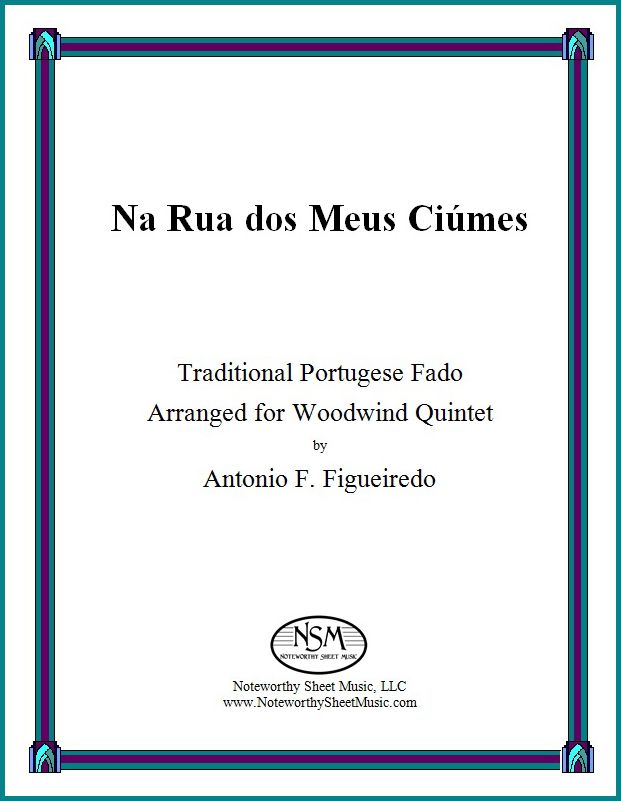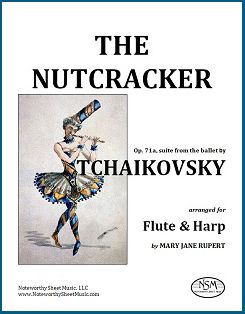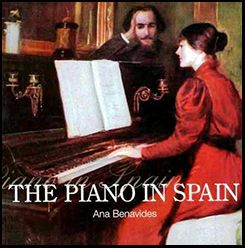Reviews & Articles
Review: Kleemation (IAWM)
Dr. Laura G. Kafka's review of the compact disc Elizabeth Vercoe: Kleemation and Other Works was written for the Journal of the IAWM and appears in Vol. 19, No.1 (2013): 38-39. We reprint the review here in it's entirety, with permission from the Journal of the IAWM. Noteworthy Sheet Music is proud to publish sheet music for Elizabeth Vercoe's works, including two pieces performed on this CD - the title track Kleemation and To Music (the bold font used to highlight these pieces was added by NSM).
============================================
CD Reviews
Elizabeth Vercoe: Kleemation and Other Works
Peter H. Bloom, flute; Mary Jane Rupert and Rosemary Platt, piano; Sharon Mabry, mezzo-soprano; Boston Musica Viva, and others. Navona Records NV5884 (2012). ASIN B00925TAAU.
LAURA KAFKA
Kleemation and Other Works, a compilation recording of the highest quality from both an artistic and an engineering standpoint contains six of Elizabeth Vercoe’s vocal and instrumental compositions composed from 1975 to 2003. Although four of the compositions were previously released on other recordings, it is a pleasure to find these six works assembled together here. Clear, extensive liner notes by the composer include song texts, facsimiles of the five drawings by Paul Klee that inspired Kleemation, and photographs of the composer and performing artists.
Kleemation for Flute and Piano, a five-movement, fifteen-minute work,is performed by “2” (Peter H. Bloom, flutes, piccolo; Mary Jane Rupert, piano, harp), a distinguished musical duo of more than twenty years’ international standing. Vercoe musically renders Klee’s drawings with all the humor, fear, and reality that make each one leap from its canvas and dance. The second movement, Please!, draws on the swing music with its lounge-lizard-like appeal that Vercoe cleverly manipulates before returning to an echo of the easy-going opening of the movement. Vercoe composed More Will be Marching Soon as U.S. troops entered Iraq in March 2003. It incorporates the hymn “Onward Christian Soldiers” into both the flute and the piano parts in the anxiety-infused fourth movement. The composer indicates that the final movement of the work, “Woman Sowing Weeds,” has “subversive intentions.” Decidedly hopeless in character, it features a flickering flute symbolic of the woman’s hand gesture as she scatters the seeds; a staccato piano represents “raining down tiny seeds.” This eloquently reminds us that the seeds sown by war’s atrocities have repercussions lasting for generations to come.
Fantasy, a ten-minute solo piano composition in six contrasting sections, is bold, free-flowing, and dramatic. It affords the pianist an opportunity to utilize the instrument as an orchestra, with a wide variety of color and timbre. The work explores rhythm and tempo and features effects such as strumming the piano strings, glissandi, arpeggios, and trills. Vercoe’s musical directions on the score are minimal, leaving the pianist maximum latitude for personal interpretation. Rosemary Platt plays with bravura and broad sweeping strokes.
Irreveries from Sappho is a witty seven-minute song cycle in English for mezzo-soprano or soprano and piano, one of eight cycles on texts by women. Although Sappho, the Greek female poet, lived approximately 2,600 years ago, the poetry selections are appropriate and enduring themes for women today. From start to finish the writing is imaginative: traditional counterpoint and recitative are interspersed with musical “sleight of hand” (as Vercoe calls it in her liner notes). The composer’s website states that Irreveries is “wickedly satiric and full of musical jokes and parodies” (including snippets of “Turkey in the Straw” and “Auld Lang Syne”). It asks the singer to use glissandi and Sprechstimme, and to take on the personality of each of the three women depicted in the three songs. The cycle requires expert technique on the parts of both singer and pianist, coupled with a good sense of humor and the ability to “sell the song” without apologizing for it. Mezzo-soprano Sharon Mabry has a full, well-placed and well-controlled middle voice which fits the vocal requirements of these songs like a glove, and she is skillfully accompanied by Rosemary Platt. The songs can also be sung by sopranos, as long as the middle voice has enough full-bodied color and texture, and Vercoe also has an SSA arrangement for choir.
Herstory II: 13 Japanese Lyrics is a nineteen-minute English song cycle consisting of thirteen songs for soprano, piano and percussion. The texts, in a haiku-like form, are by medieval Japanese women poets. InLady Suo or in Lady Horkikawa, Lady Ukon, the singer is asked to speak the text, and in The Poetess Ono No Komachi and Lady Izumi Shikibu, to whisper it. The vocal line is always dramatic and at times requires the singer to execute wide leaps, as in Interlude 2, Lady Akazome Emon. Herstory II does not require a singer with a large voice, but welcomes a flexible and an exceedingly expressive one that can tackle the demands of the highly dramatic text. Both the piano accompaniment and the percussion part lend an exotic character to the cycle and imbue it with mystery and interest that is almost frightening at times, primal and raw. The over-all mood of the cycle is tense and the women depicted border on the hysterical, reminiscent of Richard Strauss’ settings of Shakespeare’s Ophelia Lieder. Members of the internationally acclaimed Boston Musica Viva interpret this cycle in a fashion that leaves the listener convinced that their interpretation is the only possible one.
To Music is a five-minute work for solo flute in four separately-titled contrasting sections inspired by the poetry of Russian writer Anna Akhmatova. The interpretation of To Music by flutist Nancy Stagnitta is imaginative, playful, clear, and virtuosic—a true listening pleasure. The multiphonics were especially enjoyable.
Despite Our Differences I is a thirteen-minute movement for piano trio composed in Paris in collaboration with Greek-American pianist Christine Paraschos, to whom the work was dedicated after the pianist’s tragic death in 1997. The recording is a live and unedited performance that was premiered at the “Women’s Music Festival/85” at Boston University. Alea III’s performance with guest pianist Paraschos is a musical collaboration of the highest order, executing Vercoe’s dramatic music with virtuosity and style.
Elizabeth Vercoe’s Kleemation and Other Works is outstanding in every respect, an artistic masterwork that merits high praise. I cannot recommend it too highly. It seduces the listener down a path leading to a musical landscape that is abstract yet accessible. Both the audio CD and the MP3 download are available from Amazon, iTunes, and Spotify. I further recommend that the reader make time to visit the composer’s comprehensive website (www.elizabethvercoe.com).
Dr. Laura G. Kafka is an educator, musicologist and singer from California, residing in Maryland. She has taught music at every level from elementary through university undergraduates and she has worked in arts administration. Additionally, she sings recitals and adjudicates solo vocal competitions and choral festivals. Her interests include Karol Szymanowski and translating Polish and French poetry into English performance editions for art songs and children’s choral literature (
Review: Na Rua dos Meus Ciúmes - WW5
Flute Focus published the following review (9/19/2013) of Antonio Figueiredo's arrangement of Na Rua dos Meus Ciúmes for woodwind quintet; the review was written by John Ranck, DMA.
=======================================================================
Na Rua dos Meus Ciúmes – Traditional Portuguese Fado
Arr. For Woodwind Quintet by Antonio F. Figueiredo
 This brief piece is a charming addition to the quintet repertory. The edition comes with both score and parts; the former includes chord indications which will be helpful for student players to explore its underlying harmonies and for experienced players to come up with embellishments of their own. The parts are clearly laid out, very easy to read, and each fits on a single page. The publication also includes informative explanatory material about the story of underlying this particular fado, though a brief exploration of the fado as a song form, and of its history, would be welcome. This piece would make an interesting pairing with Danzas Mecánicas by Peter Van Zandt Lane, also in the Noteworthy catalog, or with Armando Ghidoni's jazzy Badaluk-Concerto.
This brief piece is a charming addition to the quintet repertory. The edition comes with both score and parts; the former includes chord indications which will be helpful for student players to explore its underlying harmonies and for experienced players to come up with embellishments of their own. The parts are clearly laid out, very easy to read, and each fits on a single page. The publication also includes informative explanatory material about the story of underlying this particular fado, though a brief exploration of the fado as a song form, and of its history, would be welcome. This piece would make an interesting pairing with Danzas Mecánicas by Peter Van Zandt Lane, also in the Noteworthy catalog, or with Armando Ghidoni's jazzy Badaluk-Concerto.
Mr. Figueiredo has other fado transcriptions for wind quintet, and I look forward to their appearance in the Noteworthy catalog.
John Ranck, DMA
http://johnranck.net/studio/studio.html
=========================================================================
Antonio F. Figueiredo’s arrangement of the traditional Portuguese fado Na Rua dos Meus Ciúmes for woodwind quintet is available from Noteworthy Sheet Music, LLC. Visit the NSM website at www.NoteworthySheetMusic.com to download the music as a PDF.
Review: The Nutcracker - Flute & Harp
The following review of Mary Jane Rupert's arrangement of The Nutcracker for flute and harp was written by Cynthia Price-Glynn.
=======================================================================
The Nutcracker Suite
from the ballet by Tchaikovsky
arranged for Flute & Harp by Mary Jane Rupert
Finally - - - harpists get to play all the wonderful character pieces in this very popular and well-known ballet suite . . . not just the Waltz of the Flowers.
Mary Jane Rupert has done a masterful job of capturing the mood, attitude, and even humor of these pieces that are recognizable all year round. Her partnering of the two instruments actually mirrors the color and nuances of the original orchestration.
 The suite is certainly worthy of the concert stage, and certainly delightful in any setting (formal or informal) during the winter holidays. Besides flute, they could also be played on violin or clarinet.
The suite is certainly worthy of the concert stage, and certainly delightful in any setting (formal or informal) during the winter holidays. Besides flute, they could also be played on violin or clarinet.
Some pieces are technically challenging for harp and for flute - - but well worth the effort. All seven can be performed together as a suite, or in groupings of two or three pieces. Students could learn the pieces one by one as they progress technically.
The publication (by Noteworthy Sheet Music) is very clear and precise, easy to read and on high grade paper - - to last through years and years of being played.
Players and listeners have enjoyed Mary Jane's "Nutcracker" arrangement for years in the Boston area. This is a 'must-have' for anyone who likes having fun in a duo while making beautiful music that everyone loves to hear.
Cynthia Price-Glynn
Principal Harp, Boston Ballet
Chair of the Harp Department, Boston Conservatory
Review: The Nutcracker - Flute & Piano
The following review of Mary Jane Rupert's arrangement of The Nutcracker for flute and piano was written by John Ranck. It was published in the December, 2013 issue of The Flute View.
======================================
The Nutcracker, by P. Tchaikovsky
Arranged for Flute and Piano by Mary Jane Rupert
This attractively-produced transcription contains all of the movements in the suite derived from that composition of the Nutcracker (except the Overture), a perennial favorite at Christmastime. In addition to providing a good selection of holiday tunes to entertain listeners during holiday parties, this edition will more importantly give flutists an opportunity to get most of the ballet's difficult flute passages under their fingers in context (in preparation for potential auditions), as well as giving them a crack at the lovely oboe solo in the Arab Dance movement.
Dr. Rupert is a master at transcribing piano parts for the harp, and, as is clear from this arrangement, at orchestral reductions. Pianists, however, will have their work cut out for them in the Waltz of the Flowers, especially the harp solo contained therein. The flute part is well laid out, avoiding awkward page turns; pianists will most likely want a page turner in the faster movements like Trepak.
John Ranck, DMA
http://johnranck.net/studio/studio.html
Review: The Piano in Spain (AMIS)
The following review by Jonathan Santa Maria Bouquet of The Piano in Spain by Ana Benavides was published in the Newsletter of The American Musical Instrument Society, Volume 44, No. 1, Spring 2015, p22. The review is reproduced here with permission from AMIS.
=========================
Ana Benavides’ book is directed to a non-specialist general public with a focus on the piano and its music from around 1729 until the early twentieth century in Spain. It is published in Spanish, Russian, and English (The Piano in Spain, ISBN: 8437009967072) with slight changes in the content and length. The book is divided into 12 chapters, plus a prologue by Andrés Ruiz Tarazona and an appendix listing the author’s piano music editions as well as her audio recordings of Spanish piano music.
the early twentieth century in Spain. It is published in Spanish, Russian, and English (The Piano in Spain, ISBN: 8437009967072) with slight changes in the content and length. The book is divided into 12 chapters, plus a prologue by Andrés Ruiz Tarazona and an appendix listing the author’s piano music editions as well as her audio recordings of Spanish piano music.
It is important to point out that rather than studying the history and development of the instrument itself, this book presents a broad musicological perspective. Benavides focuses her work in the socio-cultural aspects of the piano in Spain, exploring its music, performance spaces, performers, composers, and piano teachers. Only the first two chapters are dedicated specifically to the piano, the first being the introduction and the second being a chapter exploring early piano makers in Spain. The structure of these two chapters, also used in chapters 5 and 8, consists of an introduction followed by short biographies of relevant figures. Each of these biographies includes a brief text accompanied by very interesting images either in color or black-and-white. These images represent a very valuable resource, their quality and printing are generally good and they are properly credited and referenced.
Chapters 3 to 7 explore social aspects of piano music and its social context, focusing on performance spaces, music editions, Spain’s Nationalism, Spain within Europe, and piano repertoire respectively. Chapter 8, “Maestros y Predecesores,” is dedicated to piano teachers and includes fifty short biographies. Each biography is only one page long and comprises a small image, a portrait of the pianist, or a reproduction of the cover of one of his editions, a short text, about one paragraph long, and an excerpt of his music.
The last 4 chapters are longer biographies, each of them devoted to a particularly important Spanish composer for the piano: Isaac Albeniz, Enrique Granados, Manuel de Falla, and Joaquin Turina.
Throughout this book we find interesting quotations from important piano figures such as composers, academics, etc., all printed in a distinctive turquoise color. The text is presented without breaking its narrative, and with a few exceptions (pp. 15, 91, 155), is properly referenced. However, within the text we find opinions and ideas of other authors mentioned without suitable citations and vague references to non-specified sources (pp.16, 17, 20, 28, 29, etc.). Nonetheless, Benavides’ work is laudable for exploring and investigating many obscure nineteenth-century Spanish musicians and their practically unknown music.
Altogether, this book is an interesting introductory text at a basic level, suitable for musicians, musicologists, and piano enthusiasts; it is written in an approachable language, contains useful information, and the collection of period images is a valuable iconographic resource.
Jonathan Santa Maria Bouquet
University of Edinburgh
Jonathan Santa Maria Bouquet is the Principal’s Career Development Ph.D. Scholar and Conservator of musical instruments at the Edinburgh University Collection of Historic Musical Instruments.
